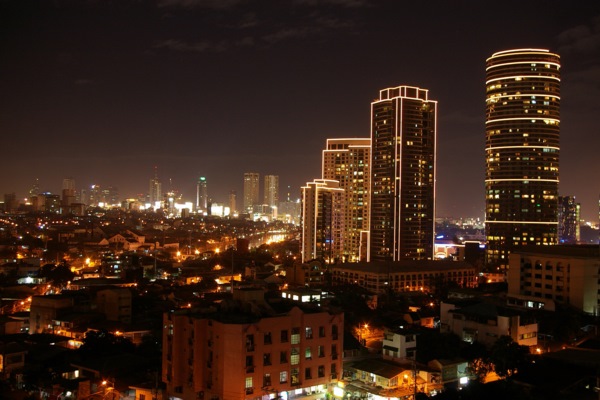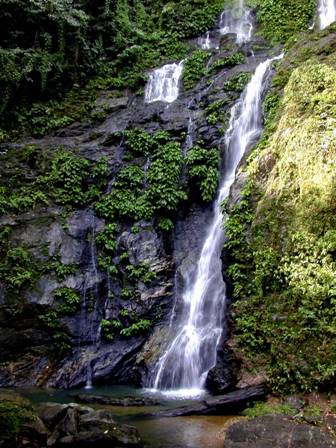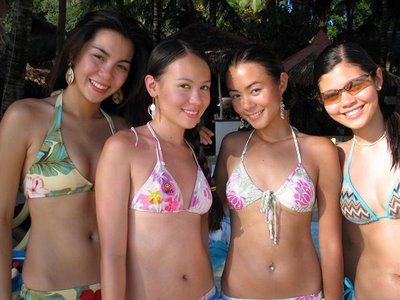
The Forgotten Republic of the Philippines is an archipelago composed of over seven thousand islands located in Southeast Asia. To the east it borders the Philippine Sea, south to the Sea Cebeles, on the west by the South China Sea, Borneo in the southwest and northern Taiwan.
Weather:
The archipelago’s climate is tropical, and although the temperature does not vary too much throughout the year, the months of greatest heat in April May. The rainy season is concentrated between June and October. Between December and May, the season of typhoons least is the best time to visit the islands. It should be remembered that during Easter and Christmas is the season and demand for tickets and hotels is very high.
Important Information:
To enter the country you need a valid passport with a minimum of six months, a return ticket and a visa can be processed upon arrival and is valid for 21 days. Besides this visa is valid for another 59 days which costs $ 35 and must be requested in advance in a Philippine consulate.
The currency of the Republic is the peso (PHP), but major credit cards are accepted in all cities and tourist destinations. However, traveler’s checks are not always received, even some banks do not accept them. U.S. dollars, euros and pounds sterling are widely received as payment. In major cities there are ATMs, but it is recommended to always have some local currency, especially when visiting less urbanized centers. It expects a 10% for most services. If 10% is already included in the bill, tipping is optional.
Unless the traveler is from an area infected with yellow fever, there are no immunization requirements for entering the Philippines. However there are some health problems that should be taken into account; recommended vaccines typhoid, hepatitis A and rabies. There is also risk of malaria in some parts of the Philippines, and visitors should consult a doctor before visiting, urban areas are considered free of risk. Cholera and dengue fever are diseases that pose a risk throughout the country, there is the best prevention against the latter is to avoid mosquito bites. The tap water is not safe and neither is the ice in drinks. Sea snakes are extremely poisonous, so visitors should be careful in the remote coastal areas, lakes and rivers, as the antidotes are not always available. In major cities the level of care is very good, although the cost of it is fairly high in the more remote areas, is not so easy to get medical facilities. Passengers are advised to travel medical insurance with extended coverage.
Safety must be a topic of interest to all tourists who wear the Philippines. It is vitally important to stay informed before and during the trip about the state of security in the country, the events concerning terrorism, kidnappings and other crimes. It is recommended to stay alert on the islands, especially in Manila, the poverty that people live may be grounds for crime. Have been reported kidnappings of foreign tourists (including the sea) on the part of extremist groups and there have been bombings in public places and transport in Manila and Mindanao. It is recommended to take special care in central, southern and western Mindanao, in Basilan, Tawi Tawi, Jolo, Sulu Archipelago, Palawan, and tourist centers.

Where to go:
Manila, the capital of the archipelago, is a modern city which, in addition to be an excellent starting point to other destinations, offers visitors a wide variety of entertainment venues and bars, including Intramuros, the old Spanish walled city, filled fingerprint of the colonial past. South of Manila is the crater of Taal Lake, a place that is not a must.
To the north is Luzon Banaue, home of the terraces for growing rice, considered the eighth wonder. These banks, which have been excavated from a hillside by itufago, a Philippine tribe, over two thousand years, extending its stone steps to a height of 1,500 m.
On the island of Mindoro Puerto Galera is one of the most sought after locations for tourists to enjoy the beach and sun.
Alongside Luzon Catanduanes is an island of beautiful beaches and reefs where you can enjoy the surf, as long as care is taken with the currents.
Boracay, an island north of Panay, is considered among the best beaches in the world, although its waters are the most free of pollution that exist.
At the heart of the Philippine archipelago is the island / province of Cebu, a good starting point to visit the tropical region of central Visayas, caves and lagoons of Calanggaman and Jack, the beaches of Arga, Oslop and Carmen facilities and Diving in Moalboal, Badi, and Mactar Olang. You can visit the Basilica Minore di Santo Nino, several beaches, the Casa Gorordo museum, and Fort San Pedro Museum Jumalon.


Festivals:
Among the most important festivals in the Philippines are the New Year, celebrated with great joy and fireworks, the Black Nazarene procession, which takes place on January 9 in Quiapo and the Ati-Atihan (carnival) celebrated the third week of January in Kalibo, Panay. You can also attend on Good Friday, which highlights the scourge, Fernando and Antipolo.

Philippines offers much variety and the tourists!
Leave a Reply
You must be logged in to post a comment.
Recent Comments